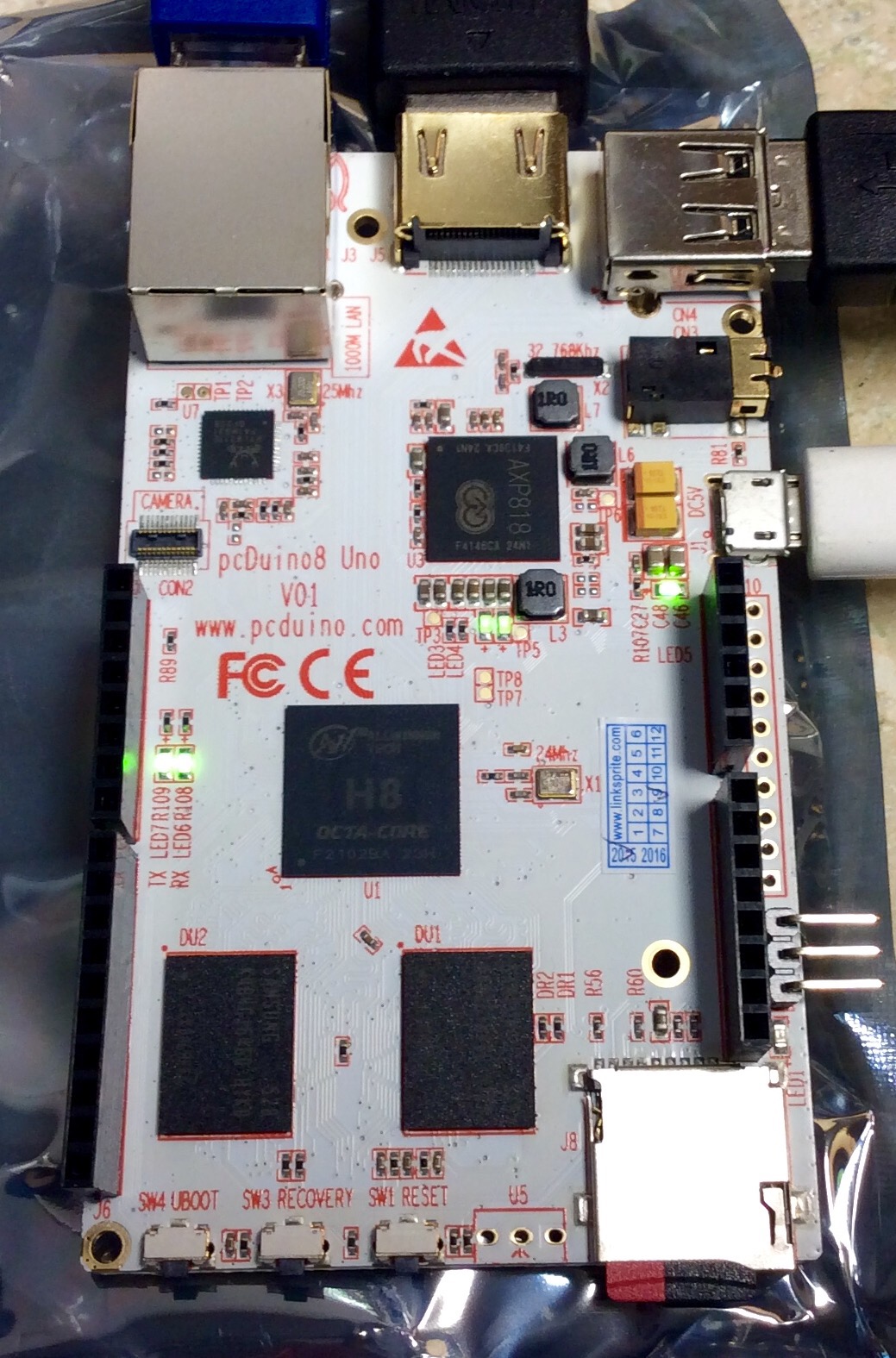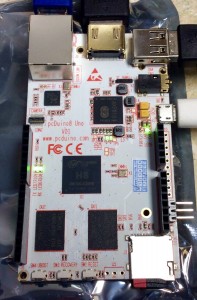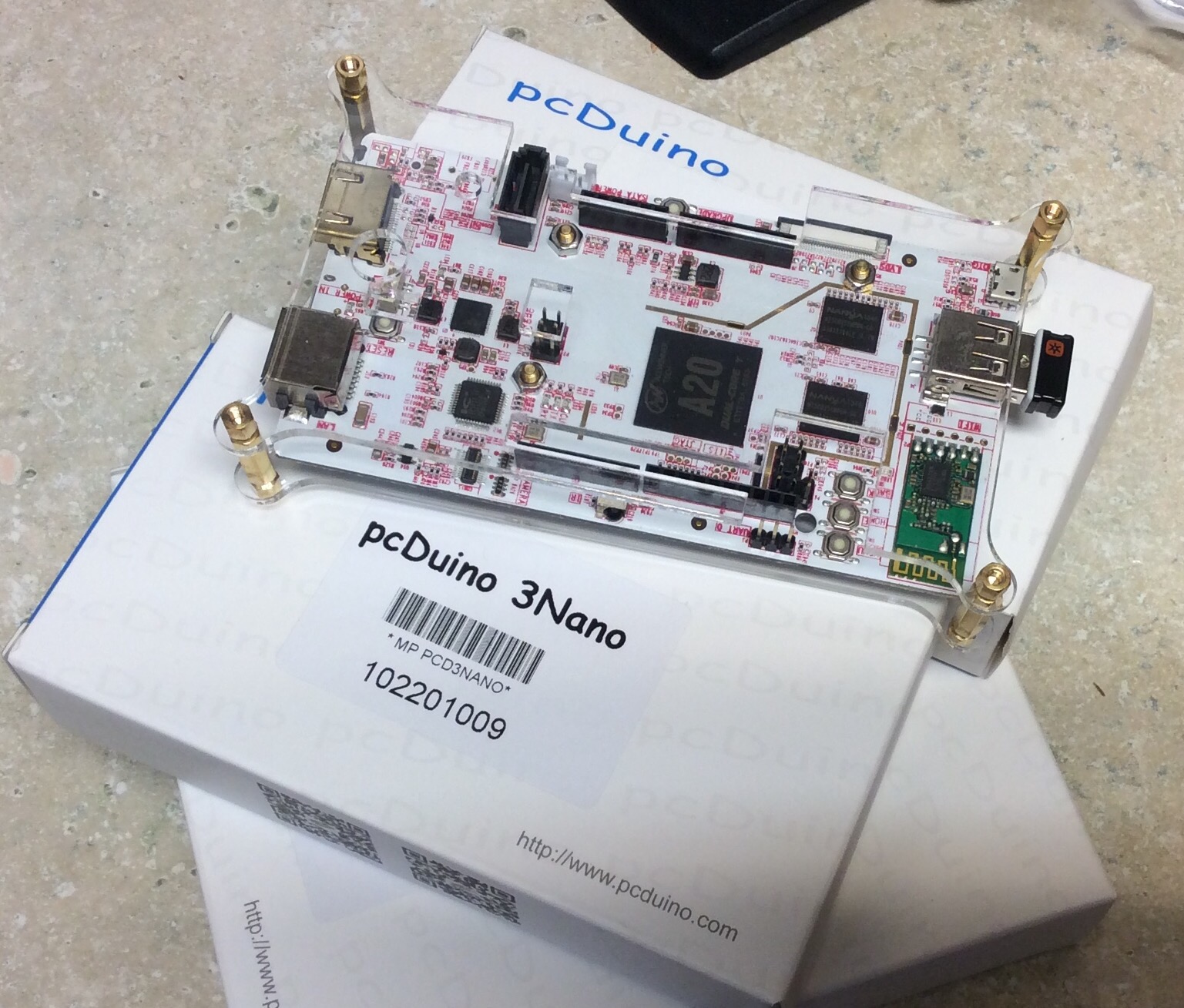I recently picked up a pcduino8 Uno on Amazon for $40. The prices on the whole pcduino line has dropped a lot this past year due to stiff competition from Raspberry pi. This model is smaller than the pcduino3 line, does not have SATA, but does use the Allwinner H8.
For the record I don’t really believe in crypto currency mining. The ROI does not make sense unless you do this professionally and invest in high end ASIC hardware (and still have the guts to ride out major exchange rate fluctuations). However, cpuminer is an interesting metric to get relative performance data on wildly different hardware platforms and architectures.
The bottom line: cpuminer running on the pcduino8 uno cores (8 of them) produces about 1.6 to 1.7 khashes/second. The Raspberry pi 2 will do roughly 1.5 khashes/second on four cores.
On a side note, there does not yet appear to be a GPU driver for this board.



